 Baroque is a style of architecture, music, dance, painting, sculpture, and poetry that thrived from the early 17th century through the 1750s in the history of western art. Baroque art characteristics include: Chiaroscuro, Tenebrism, Quadro Riportato, and Illusionism (Trompe l’Oeil and Quadratura). The Baroque period came after the Renaissance and Mannerism art periods and before the Rococo and Neoclassicism art periods. The Baroque style eschewed the harsh characteristics that the Protestant style portrayed.
Baroque is a style of architecture, music, dance, painting, sculpture, and poetry that thrived from the early 17th century through the 1750s in the history of western art. Baroque art characteristics include: Chiaroscuro, Tenebrism, Quadro Riportato, and Illusionism (Trompe l’Oeil and Quadratura). The Baroque period came after the Renaissance and Mannerism art periods and before the Rococo and Neoclassicism art periods. The Baroque style eschewed the harsh characteristics that the Protestant style portrayed.
The Baroque style, which had its beginnings in Rome, Italy, eventually spread throughout northern Italy, France, Spain, Portugal, Austria, southern Germany, and Russia with the aid of the Catholic Church. By the 1730s, it had developed into the rocaille or Rococo style, popular in France and Central Europe until the middle to the late eighteenth century. The Baroque Movement is mainly associated with the Catholic Counter-Reformation. It was the perfect medium for expressing the rekindled spirit of the Catholic Church because of its dynamic movement, bold realism (which gave spectators the feeling that they saw an actual event), and direct emotional appeal.
The term Baroque was most likely derived from the Italian word Barocco, which philosophers used throughout the Middle Ages to designate an obstruction in schematic logic. Subsequently, the term Baroque evolved to indicate any twisted notion or convoluted cognitive process. Another probable origin of the term Baroque is the Portuguese word barroco (Spanish: barrueco), which was used to describe an uneven or irregularly shaped pearl; this use is now preserved in the phrase baroque pear. The word Baroque was employed in art criticism to characterize anything irregular, odd, or otherwise deviating from established standards and proportions. This prejudiced perspective of 17th-century art forms was maintained by critics ranging from Johann Winckelmann to John Ruskin and Jacob Burckhardt, with few exceptions. Until the 19th century, the word Baroque was synonymous with bizarre, grotesque, exaggerated, and over-decorated.
The baroque period was an innovative time for music. German composers George Frederic Handel and Johann Sebastian Bach are now synonymous with baroque music, yet Italian composers dominated the scene at the time. The harmony in baroque music was muddled, with an excess of modulations and discord. Unlike other Baroque art forms, the Baroque furniture style was restricted to the seventeenth century. The furniture industry was then controlled by the extravagant preferences of King Louis XV of France, who, together with his artisans, produced the Regence and Rococo styles. Baroque architecture was distinguished by its elaborate ornamentation and detailed features. Elements of Renaissance architecture were made more extensive and dramatic by optical illusions and the improved use of trompe-l’oeil painting.
Famous Baroque artists include: Michelangelo Merisi da Caravaggio who was an Italian painter; Peter Paul Rubens, Artemisia Gentileschi, Diego Velázquez, and Gian Lorenzo Bernini (1598 – 1680). Baroque period artists sought to capture the activity or drama of a particular moment, usually with a religious or biblical theme. The Catholic Church has a close relationship with Baroque art, which was developed to inspire awe and reverence in those who adhere to its doctrine.
Major artworks of the Baroque style include: The Calling of St Matthew by Michelangelo Merisi da Caravaggio, Judith Slaying Holofernes by the Italian Baroque artist Artemisia Gentileschi, St. Peter’s Baldachin by Gian Lorenzo Bernini, Las Meninas by Diego Velázquez, and The Night Watch by Rembrandt van Rijn.
Baroque art directly influenced the playful and abundant Rococo movement that took off in the 1730s on the European continent. While it took the Baroque’s rich interior gilding and detailed details as inspiration, it pushed the extravagance and glitz to excessive proportions. The Baroque period ended in Paris around 1720 with the rise of Rococo. Although Rococo is occasionally referred to as “Late Baroque,” it adopted a more pleasant and entertaining style tied to courtly life. However, Rubens influenced Jean-Antoine Watteau, François Boucher, and Jean-Honoré Fragonard, showing that Baroque artists continued to have an impact during the Rococo era.
A brief history of the Baroque Period
The Baroque art movement emerged from the Council of Trent, a meeting within the Catholic Counter-Reformation, a reaction to the Protestant Reformation. The council agreed that rich art might be used to promote Christian theology and splendour. The pope and Catholic intellectuals pushed European artists, sculptors, and builders to develop the Mannerist styles, which were influenced by High Renaissance art. The ideals of beauty that dominated contemporary art at the period were accentuated by Mannerism.
Artists like Caravaggio spurred a return to grand-scale realism, with a significant homage to Greek and Roman classicism. Baroque art and architecture spread outside of Rome early in the seventeenth century. Louis XIV chose to extend the Palace of Versailles, which is situated outside Paris. The remodelling included essential elements of baroque art and architecture. In Northern Europe, where art had generally conformed to the standards of the Protestant Reformation, Peter Paul Rubens, a Catholic artist who had studied extensively in Rome, brought Baroque art concepts and methods.
Midway through the seventeenth century, Spain adopted the baroque style. Las Meninas by Diego Rodrguez de Silva y Velázquez, which depicts the Spanish royal family, is one of the era’s most significant works of art. While Spain accepted the style by the middle of the sixteenth century, it took almost a century for Baroque to penetrate Portuguese society, favouring more conservative art and architecture.
A more playful yet showy interpretation of the Baroque style, Rococo spread to central European countries such as Bohemia, Bavaria, Austria, and Poland. Basilika Vierzehnheiligen (Basilica of the Fourteen Holy Helpers) in Bavaria, Germany, is a prime example of Rococo architecture. In the eighteenth century, Rococo gained popularity in France and signalled the end of rigid Baroque art in most of Europe.
Protestants versus Counter-Reformation Developments
The Reformation between the Protestants and Catholic Church in the 1500s was one major political and religious upheaval that influenced the development of the Baroque period in Europe. Martin Luther is famous for his work “95 Theses,” which he composed in 1517 in response to his concerns about several dubious practices by the Catholic Church. His main concerns were that the Church (under Pope Leo X) would sell plenary indulgences to people to collect money to construct St. Peter’s Basilica in the Vatican City of Rome. Martin Luther and the Church first experienced severe difficulties in 1521 when Luther refused to recant his opinions despite being pressed to do so. He was labelled a “notorious heretic” in the Edict of Worms, issued by Emperor Charles V, and excommunicated from the Church.
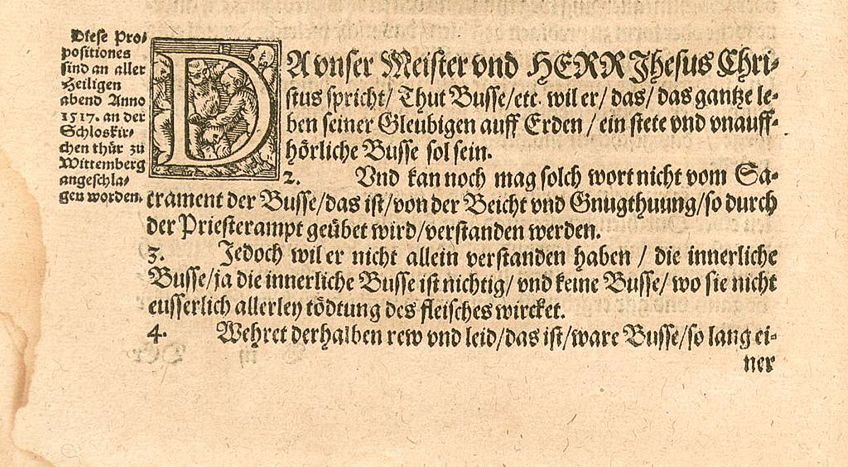
The Catholic Counter-Reformation was established following the turn of events from the Protestant Reformation, which was thought to have ended either during the Peace of Augsburg in 1555 or during the Treaty of Westphalia in 1648. This began in 1545 and continued through 1563 with the Trent Council. The Council of Trent had numerous meetings to discuss various problems and practices within the Church and its systems. Both art and spirituality underwent significant changes due to the Catholic Counter-Reformation. Protestants agreed that much of the religious imagery used by the Catholic Church was excessive and attempted to eliminate it. Iconoclasm, the violent destruction of holy artefacts by the Catholic Church, was practised by some Reformists. According to Protestant principles, religious pictures should only feature depictions of Jesus or the cross.
The Protestant Reformation prohibited the use of pictures in religious worship. Still, the Counter-Reformation believed that such art had a didactic role and demanded a new kind of visual representation that was simple but dramatic, accurate in portrayal, and clear in the narrative. The “pastoral role” of art was regarded as a fundamental goal of religious iconography, allowing painters to show the suffering and crucifixion of Christ and many of the saints associated with Biblical themes. The council members established rigorous guidelines stating that no imagery could imply idolatry.
The Baroque period, better known as what came after, was characterized by new artistic styles and mentalities expressed in religious iconography. With the help of the Catholic Church, particularly the Pope in Rome and the Catholic kings and queens of Italy, France, Spain, and Flanders, this new Baroque style quickly swept throughout Europe. Strong religious groups spread it through their vast network of monasteries and convents.
High Baroque period (1625- 1700)
The High Baroque period, characterized by the grandeur and an emphasis on movement and drama, began around 1625 and lasted until about 1700. Gian Lorenzo Bernini led and dominated the period, creating the Baroque sculptural style. During the High Baroque, the interiors of Baroque churches became more wealthy and centred on the altar, which was often located under the dome. The Chair of Saint Peter (1647–1653), The Baldachino of Saint Peter (1623–1634), and The Rape of Proserpina (1621-1622), all by Gian Lorenzo Bernini, are the most known baroque decorative works of the High Baroque.

Bernini became the most prominent architect in Rome once Cardinal Scipione Borghese became Pope Urban VIII, as evidenced by his appointment as Chief Architect of St. Peter’s in 1629. His Baldachin and the colonnade he constructed around St. Peter’s Square (1656-1667) were architectural examples of the High Baroque style. He was the great, primary protagonist of Baroque art, who was able to create undeniable masterpieces, portray the new spiritual senses of the age uniquely and pleasantly and give Rome a completely new appearance, and unite the Baroque artists.
Rise and development of the Baroque art movement
Spanish Baroque
Spanish Baroque was known for its peculiar style since the country’s culture was generally melancholy and, at times, even gloomy. The altarpiece of the Church of San Esteban in Salamanca (1693) by José Benito Churriguer exemplifies the prominence of gilded altarpieces in Spanish Baroque architecture, with its spiral columns and abundant use of gold on an ornate surface. The resultant style, which emphasized a feeling in motion, was known as “entallador” and was widely embraced in Spain and Latin America.
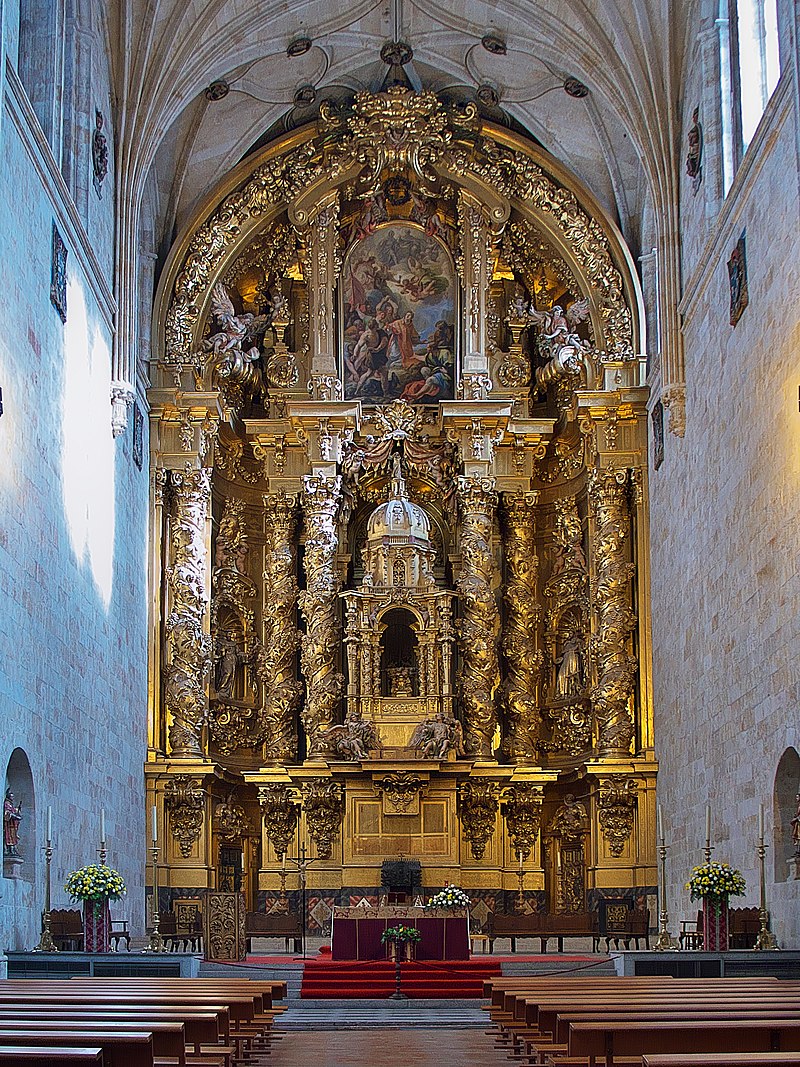
In contrast to the focus on Catholic beauty in Baroque architecture, Spanish Baroque painting highlighted the limits and misery of human life. It was distinguished by its emphasis on realism based on exact observation and its preference for a strong feeling of human drama above theatrical flourishes. By the mid-17th century, Spain had adopted the baroque style. Las Meninas by Diego Rodrguez de Silva y Velázquez, which depicts the Spanish royal family, is one of the era’s most significant works of art. Bartolomé Esteban Murillo created the vaporous style, which included a delicate colour palette, rounded forms, and silver or golden light veiling effect. His works included religious topics, such as The Immaculate Conception (1678), and genre paintings of street people, such as The Young Beggar (1645).

French Baroque and French Classicism
The most prominent manifestation of the French Baroque style was architecture. In France, it was known as Classicism, and it rejected the grandiose in favour of geometric proportion and less decorative façade. While Louis XIV summoned Bernini to France in 1661 to submit a design for the Palace of Versailles, the King ultimately selected Louis Le Vau’s classical design with Charles Le Brun as the decorator. Le Brun’s work was significant across Europe as the director of the Gobelins tapestry. The Galerie des Glaces (Hall of Mirrors) at Versailles (1678-1686) included Le Brun’s paintings and set the standard for French royal interiors. Similarly, the gardens of Versailles, which were designed in geometric grids to reflect and accent the architecture, were also famous.

French painters likewise shifted toward a more classical restraint. Claude Lorrain, often known as Claude, and Nicolas Poussin, who both worked in Rome, were the most influential French painters. Landscape and light effects were the focal points of Claude’s work; his religious or classical topics were only the impetus but not the emphasis. Poussin started painting in a Baroque manner, but by his mid-thirties, he had begun to establish his style, as Landscape with Orpheus and Eurydice (1650-1651) expressed a tranquil logic that influenced the eventual creation of Neoclassicism.

Russian Baroque
Russian Baroque is also known as Petrine Baroque, in honour of Peter the Great, who encouraged the style when he reconstructed St. Petersburg and made it the new capital of Russia in 1712. Following his visits to Versailles and Fontainebleau in 1697 and 1698, he was influenced by French Baroque. The Menshikov Palace (1711-1727) is an early example of Russian Baroque architecture of note. The interiors of Baroque buildings featured fresco-covered walls and ceilings as well as exceedingly decorative, often gilded stucco detail work.
Key figures in the style’s development include architects like Andreas Schluter, Gottfried Schadel, and Jean-Baptiste Alexandre Le Blond. Bartolomeo Rastrelli, the foremost architect of the time, made the style more sumptuous and grandiose after Peter the Great’s death. The style was later dubbed Elizabethan Baroque in honor of Empress Elizabeth Petrovona, with the Smolny Cathedral (1748-1764) and the Winter Palace (1754-1762) serving as notable examples.
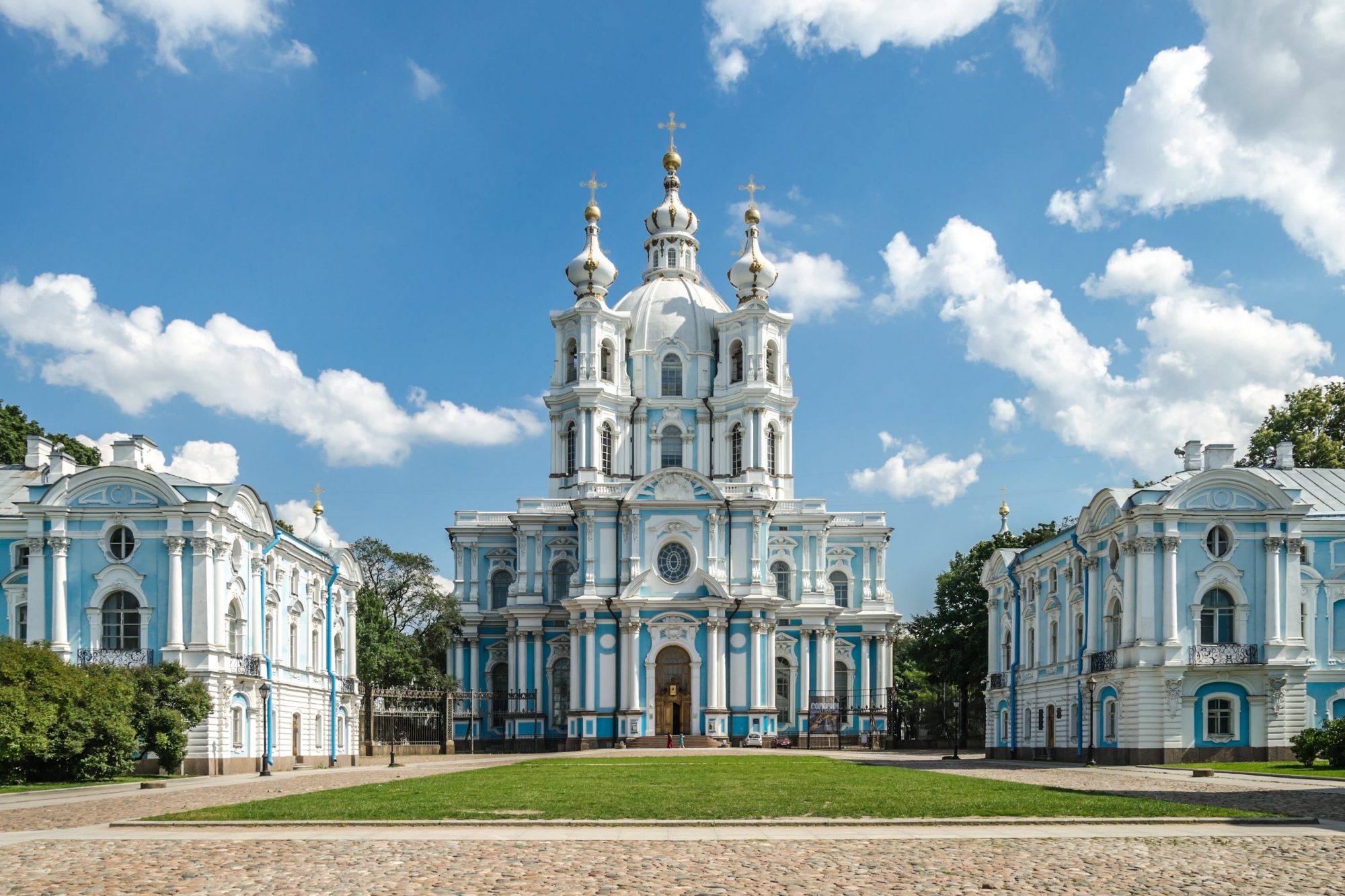
Flemish Baroque Painting
Painting was the defining characteristic of the Flemish Baroque, and its unique features sprang from historical and cultural influences. Peter Paul Rubens was crucial in the evolution of Flemish Baroque art. His religious painting, Descent from the Cross (1614), and his non-religious works, such as the Judgment of Paris (1636), were inspired by his High Baroque style, characterized by vivid color, sensuous exuberance, and motion. His feminine nudities of legendary and religious subjects were especially well-known and influential because they mixed sensuality with a depth of symbolism and reference.
Anthony van Dyck, Rubens’ most renowned pupil, is well known for his portraits characterized by courtly grace. Due to his royal ties, he became the court painter for the English court and was knighted by King Charles I of England in 1632. In 1630, he was named court painter to the Princess of Orange. The most well-known Flemish painters who painted genre scenes were Adriaen Brouwer, Jacob Jordaens, and David Teniers the Younger.

The Dutch Golden Age
The Dutch Golden Age was the only instance in which the Baroque style was utilized in a Protestant region. As a consequence, Baroque art and architecture followed a radically distinct approach. The Dutch Golden Age started in 1648, when the Thirty Years’ War came to a close and the Dutch Republic, which had seceded from Spain in 1588, finally gained freedom. In the decades that followed, spurred by its dominance in international commerce, the Republic developed into an economic powerhouse with a growing middle class.
Dutch Baroque architecture borrowed heavily from Venetian Renaissance architect Andrea Palladio’s works while preserving certain Gothic features to produce a restrained monumental style. Dutch art highlighted scenes of everyday life, secular topics, landscape, still life, and genre painting innovations. In printing, religious themes were most often used to portray biblical passages. Simultaneously, several famous Dutch painters, including Rembrandt, Johannes Vermeer, and Salomon van Ruysdael, used chiaroscuro and tenebrism in their Baroque works, as depicted in Rembrandt’s Night Watch (1642).
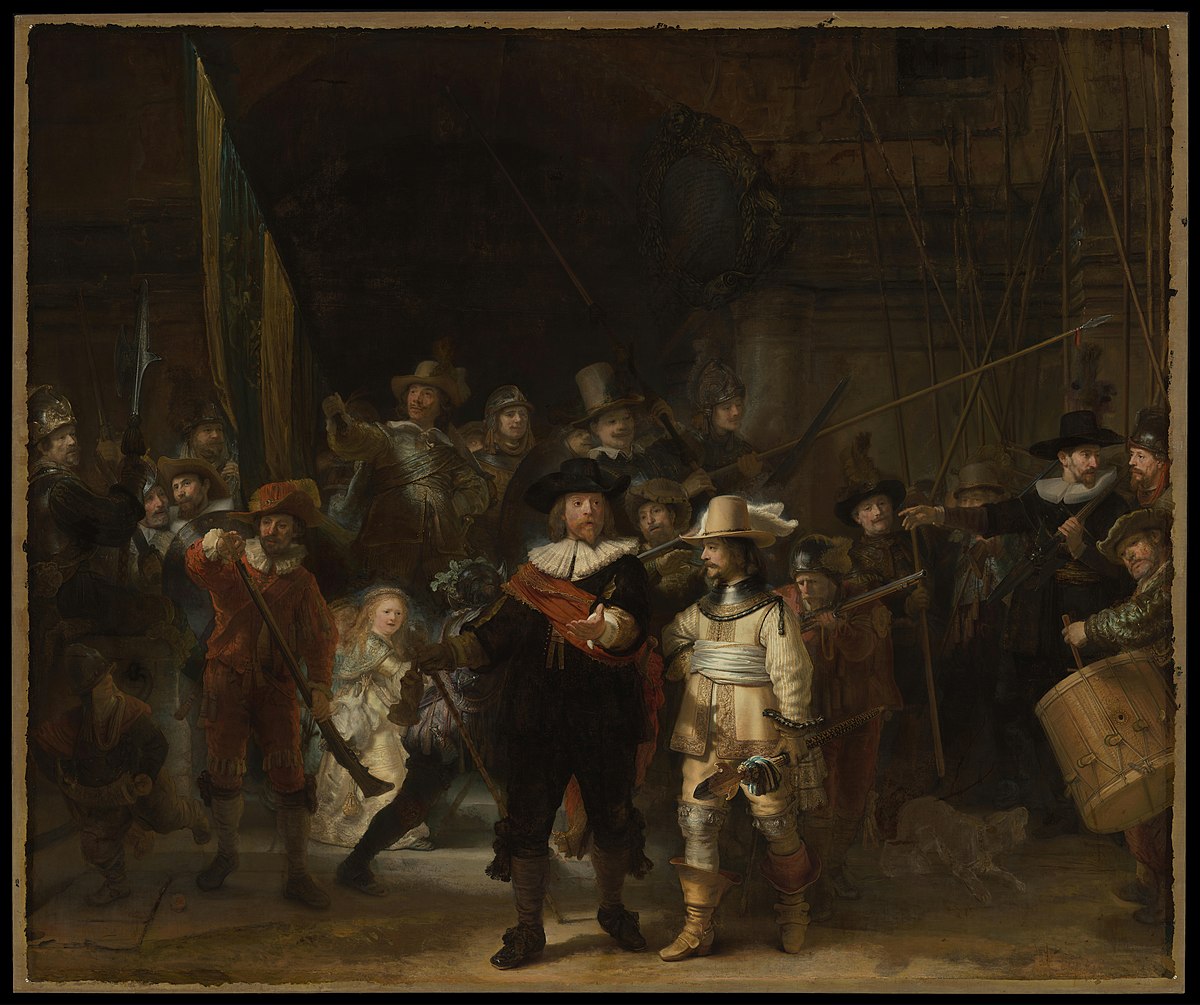
End of the Baroque art period
About 1720, the Baroque art style collapsed throughout Europe after having enjoyed enormous success. The collapse paralleled the decline of Italy, the birthplace of the style. It was replaced by the Rococo style, which France, the new European power, championed. The Baroque art style was condemned for lacking sincerity; thus the French established the Rococo style as a reaction against its stringent restrictions.
Baroque art Characteristics.
Baroque art characteristics include: Chiaroscuro ,Tenebrism ,Quadro Riportato, and Illusionism.
Chiaroscuro
The Italian word “chiaroscuro” translates as “light-dark.” It concentrates on defining painting contrasts. This method was developed during the Renaissance, but it wasn’t until Caravaggio used it that it gained popularity and became a staple of the Baroque era. The viewer nearly feels like they are participating in the event depicted in the painting thanks to the heavy emphasis on dark and light in his compositions. Caravaggio’s The Calling of St. Matthew (1599–1601) is an example of a painting that employs chiaroscuro. The painting depicts the right finger of Christ pointing in the direction of St. Matthew. Alongside Christ’s pointing finger, the approaching sunlight’s reflection in the wall’s brightness and shadow is clearly seen.
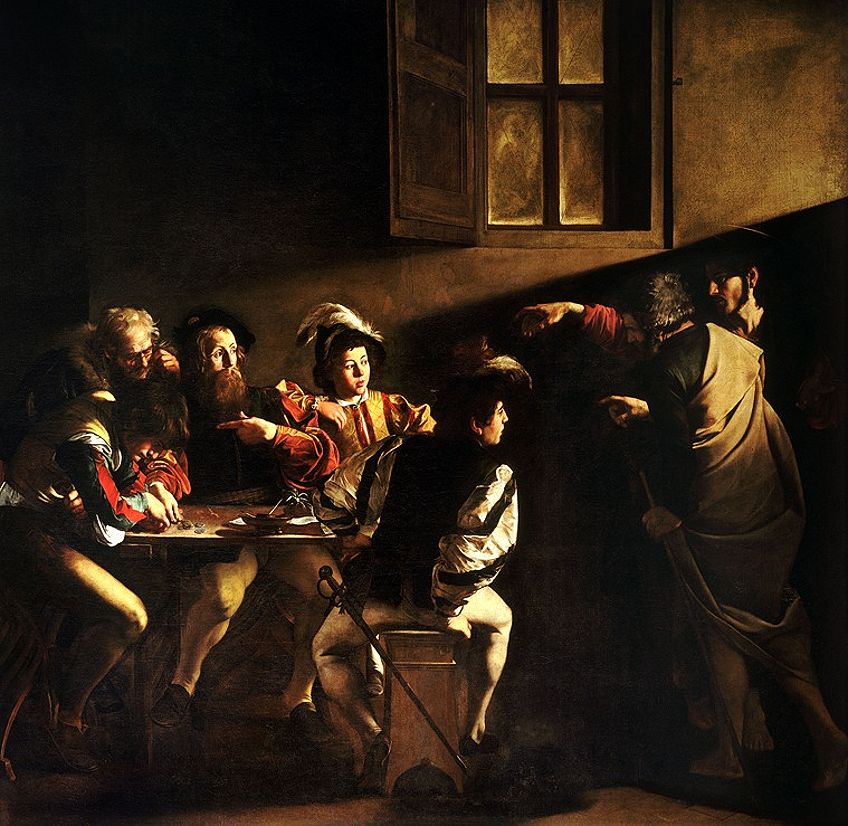
Tenebrism
Another style employed by various Baroque painters was tenebrism, which was popularized and is said to have been invented by Caravaggio. Despite being similar to chiaroscuro, it mostly emphasizes a painting’s darkest regions. The name is derived from the Latin word tenebra, which means “darkness,” and the Italian word tenebroso. Dark and mysterious are other words that are related to this concept. It intended to provide the “spotlight” effect, often known as “dramatic illumination.”

Quadro Riportato
Italian for “carrying picture,” the term “quadro riportato” was employed by artists to create what appeared to be a frame around a painting that was actually a collection of paintings arranged as a fresco. One of the pioneers of the Baroque era, Annibale Carracci, employed this method. The ceiling fresco The Loves of the Gods (1597–1601) in the Farnese Palace makes this point.
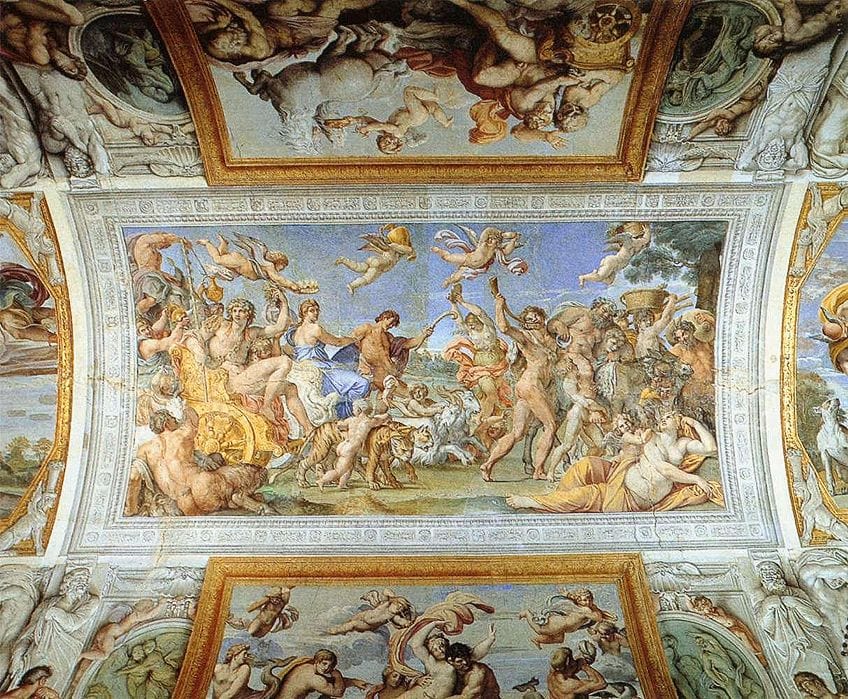
Illusionism: Trompe l’Oeil and Quadratura
Baroque art made extensive use of the concept of “opening up” areas inside paintings, which also gave the impression that the painted image was three-dimensional, creating an optical illusion. Trompe l’oeil, which is French for “deceive the eye,” was the term used to describe the creation of this three-dimensionality. This is evident on numerous church frescos and paintings from the Baroque era. It did not, however, begin during this artistic era; rather, it may be traced back to the 1800s. In actuality, this method was employed by artists like Salvador Dali in his surrealist paintings as far back as the ancient Greek mural paintings. Examples of great Baroque architectural illusionist painting include: Giovanni Lanfranco’s Assumption of the Virgin(1625–1627) on the duomo’s underside at S. Andrea della Valle, and Pietro da Cortona’s paintings at the Palazzo Barberini (c. 1633–1639) , which include the fantastic Allegory of the Pontificate of Urban VIII.

Another perspective technique used by Baroque artists is known as quadratura, and it creates pictures that purposefully resemble real architectural elements and continue them. To accurately apply this technique, theories based on architectural perspective were applied. The Triumph and Apotheosis of St. Ignatius of Loyola, by Andrea Pozzo, is one of history’s greatest paintings and unquestionably the best example of Baroque quadratura decorative art. Painted on the 95-foot-high ceiling of the Jesuit cathedral in Rome, the massed figures ascend towards the skies as a spectacular celebration of the Jesuit Order.

Famous Baroque artists and sculptors
Some of the famous baroque artists include: Caravaggio, Peter Paul Rubens, Artemisia Gentileschi, Diego Velázquez, and Giovanni Lorenzo Bernini.
Caravaggio
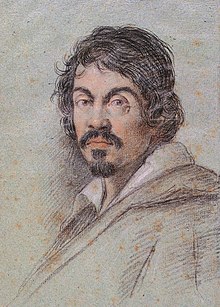
Born: 29 September 1571- Caravaggio, Lombardy
Died: 18 July 1610 (aged 38)- Porto Ercole, Lombardy
Known for: Painting
Movement: Baroque art Movement
Caravaggio was an Italian painter who spent most of his career in Rome. In the early days of the Baroque period, Caravaggio’s work had the most significant effect and impact on the other artists of his period. The world around him inspired Caravaggio, and his paintings frequently blended secular subjects and religious art. Scholars and other artists admired his dramatic and majestic use of lighting and his realistic depictions of the human condition in terms of mental and physical situations and trials.
Utilization of the technique known as chiaroscuro is a defining characteristic of Baroque art. Caravaggio did not originate chiaroscuro, but he was the first artist to utilize it as a primary aesthetic aspect, emphasizing particular features and the narrative of the picture by deepening the shadows and using clearly defined shafts of light. Caravaggio is considered the originator of tenebrism, a style that became a popular staple of the Baroque period. This method refers to the interaction between the composition’s bright and dark aspects but emphasizes dark sections.
His descriptions of dramatic scenes of violence, conflict, revenge, and death earned him acclaim and respect. His awe-inspiring lighting design illuminated the emotions of very action-packed scenes. His technique is so distinctive that it inspired the Caravaggisti style, which was adopted by several painters like Rembrandt, Bernini, and de Ribera. Caravaggio has been seen as both a representative of the late Mannerism style and a forerunner of the Baroque era.
Some of Caravaggio’s works include: The Calling of Saint Matthew (1600), Supper at Emmaus (1601), David with the head of Goliath (1699), and The beheading of St. John the Baptist (1608).
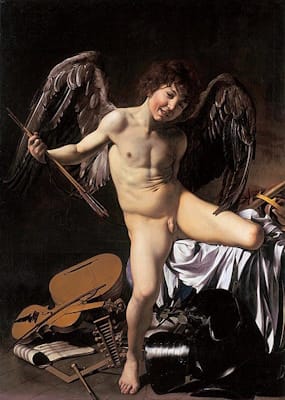
Peter Paul Rubens

Born: 28 June 1577, Siegen, Westphalia
Died: 30 May 1640, Antwerp, Belgium
Known for: Painting, drawing, tapestry design, print design
Movement: Baroque Movement
Rubens excelled in all artistic areas, producing some of the finest Baroque paintings. He was a notable figure in the Catholic Counter-Reformation art movement and widely known for his history paintings, as well as his portrait art and landscape paintings. Today, he is regarded as the foremost representative of Flemish Baroque art and a link between the Italian Renaissance’s classicism and Baroque painting’s vitality and drama. He was productive, professional, and easy to move among artistic and political groups. He is renowned for combining his mastery of Flemish realism with the traditions of the Italian Renaissance to create a solid and vibrant style that embodied the hugely popular Baroque movement, pushed by the Counter-Reformation to restore the majesty of the Catholic Church.
The compositions by Rubens that reference elements of ancient and Christian history are his most famous works. His altarpieces, portraits, and landscape paintings depicting mythological and allegorical motifs offer a clear window into the issues and atmosphere of the era in which he lived. Thanks to his charming, friendly manner and astute business instincts, Rubens was a highly effective diplomat and a talented artist. Europe’s monarchs also adopted this artistic vocabulary to proclaim their power and status. Louis XIV, for example, commissioned Versailles’s splendid buildings and gardens as a visual expression of his divine right to rule. Judith Leyster, Still life with a basket of fruit.
A few prime examples of his work are: Samson and Delilah (1610), The Descent From the Cross (1614), The Judgment of Paris (1639), and The Elevation of the Cross (1611).
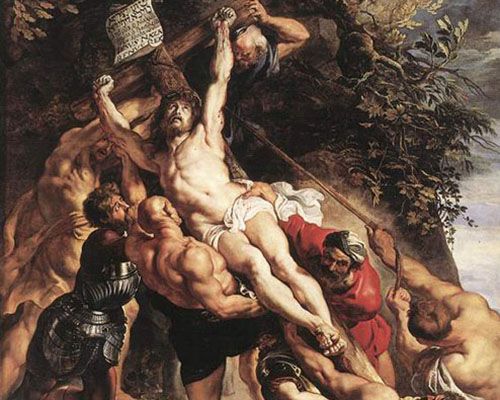
Artemisia Gentileschi
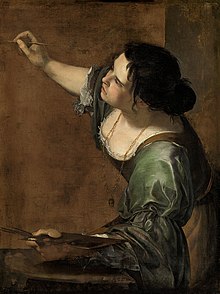
Born: 8 July 1593, Rome, Italy
Died: 1653, Naples, Italy
Known for: Painting
Period: Baroque movement
Artemisia Gentileschi is distinctive among other Italian Baroque artists as one of the few female painters on the list of famous Baroque painters. Following Caravaggio’s footsteps, her Baroque paintings were among the most dramatic and energetic of her time, and she became renowned for her realism and masterful use of chiaroscuro. As the art world at the period was predominantly male, Gentileschi also depicted several women from biblical stories, scenes of rape, and different power conflicts. She also highlighted the position of a woman in a man’s society. Her scenes exemplified the realism typical of several Baroque painters.
Gentileschi disrupted conventional representations of biblical and legendary female characters by depicting them as self-motivated heroines capable of making their own choices, as opposed to passive objects of the male gaze. In doing so, she portrayed them in an altogether new manner, giving them a potency that previous artists had denied them. The artist’s adolescent experience of assault influenced her work, and themes of authority abuse, and violence permeate many of her paintings. It is possible that painting these topics helped her cope with her attack’s trauma and seek retribution and justice via her artworks.
The art institution has acknowledged her work for its fantastic show of skill via exhibits at several prestigious art institutions, including the National Gallery of London. Artemisia Gentileschi’s most famous paintings are Judith Slaying Holofernes (1612-1613), Saint Catherine of Alexandria (1619), Jael and Sisera (1620), and Susanna and the Elders (1610).
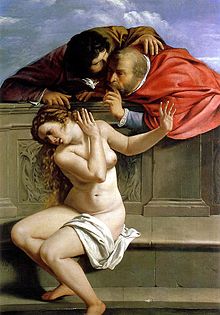
Diego Velázquez

Born: 6 June 1599, Seville, Spain
Died: 6 August 1660, Madrid, Spain
Known for: Painter
Periods: Baroque Movement
Diego Rodrguez de Silva y Velázquez was a Spanish painter and the preeminent artist at the court of King Philip IV of Spain and Portugal, as well as throughout the Spanish Golden Age. He was an independent Baroque-era artist. Initially, he painted in a rigorous tenebrist technique, but he eventually developed a more expressive style typified by aggressive brushwork. Velázquez’s works inspired realism and impressionist artists of the 19th century. In the 20th century, artists like Pablo Picasso, Salvador Dal, and Francis Bacon reinterpreted some of Velázquez’s most recognizable works as a homage to the artist.
The truth was shown in Velazquez’s paintings in a lifelike manner decades ahead of its time. He used different methods, such as free, loose brushstrokes, light, color, shape gradients, and an unrivaled eye for detail, to express detail and its intricacies effectively. This style served as a precursor to both Realism and Impressionism. Velazquez was a master of chiaroscuro, or the use of light and shadow to produce strong contrast in a painting. He used this method to emphasize areas of particular significance to the observer and to create an overall atmosphere. Velazquez used composition as a deliberate strategy to encourage the spectator to experience his work as intended. To do this, he often used diagonal constructions, complicated focus points, and different planes to direct the viewer’s attention to the most significant or to encourage a better comprehension of the image.
In addition to countless historical and cultural events, he produced dozens of portraits of the Spanish royal family and commoners, culminating in his masterwork Las Meninas (1656). By inserting a representation of himself as an artist into an intensely intimate scene with his royal subjects, he remarked on the painter’s position as one who is permitted to observe intimate moments that viewers would not ordinarily be privy. He also remarked on the painter’s ability to portray these intimate moments with his signature tools and techniques. It is a remarkable demonstration of the painter’s function.

A few of the artist’s more notable artworks include: Infanta Margarita Teresa in a Blue Dress (1659), Portrait of Pope Innocent X (1650), The Supper at Emmaus (1618-1623), The Triumph of Bacchus (1628-1629), and The Surrender of Breda (1635).
Giovanni Lorenzo Bernini
Born: 7 December 1598, Naples, Italy
Died: 28 November 1680, Rome, Italy
Known for: Sculptor, Architect
Periods: Baroque art
Bernini was one of the greatest Baroque architects and sculptors. The fact that Bernini’s sculptures captured the moment of movement contributed to the intensity of the piece when seen. His subject matter included biblical and mythical persons and settings. Bernini’s Cornaro Chapel’s colourful interior in the Santa Maria Della Vittoria Church is highly embellished. On the right, we see a statue of St. Teresa in ecstasy. The Ecstasy of Saint Teresa (1647 – 1652) is among Bernini’s best Baroque sculpture works to date. It is made of solid marble and is kept in Rome’s Cornaro Chapel. Saint Teresa of Avila is shown laying half-conscious on a cloud with an angel. Here, we observe Saint Teresa in a state of intense ecstasy. Bernini also concentrated on the bodily and sensory impact this encounter had on Saint Teresa, despite its heavenly appearance. This is evident in both her body posture and facial expression. Behind the centre characters, we also see what appear to be beams of light beaming down onto a moment of absolute joy.
Bernini altered the presentation of sculptures. He often constructed them “in the round,” which refers to works that stood alone in expansive areas and were intended to be seen from all sides by the observer, boosting the total experience and intimacy with a piece. Bernini authored, directed, and performed in plays, particularly carnival satires, since he was profoundly influenced by the theatrical. This flair for drama influenced his architecture and sculpture and led to the design of stage sets and theatrical machinery. It also led to a wide variety of decorative art objects such as lamps, tables, mirrors, and even horse-drawn carriages that exemplified the Baroque love of detail and the extravagant. This led to the artist’s ability to integrate sculpture, painting, and architecture into a conceptually and aesthetically cohesive totality.
Other examples of Bernini’s sculptures include: Aeneas, Anchises, and Ascanius (1619), The Rape of Proserpina (1621 – 1622), Apollo and Daphne (1622 – 1625), and David (1623 – 1624).

Baroque major art works
Major artworks of the Baroque Movement include: The Calling of St Matthew, Judith Slaying Holofernes, St. Peter’s Baldachin, Las Meninas, and The Night Watch.
The Calling of St Matthew
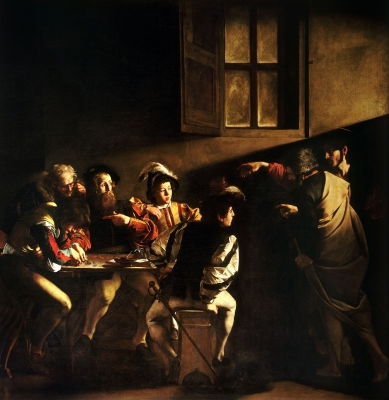
Artist: Caravaggio
Year: 1599–1600
Medium: Oil on canvas
Dimensions: 322 cm × 340 cm
Location: Cappella Contarelli
This piece depicts a dark tavern where several men wearing modern attire have turned to see Christ, gesturing with his right arm toward saint Matthew. The light accentuates the men’s facial emotions and hand gestures in a diagonal that mirrors Christ’s motion, giving the impression that the divine has just arrived dramatically. The realistic depiction of the people shows their thighs and calves, which are well-muscled and in motion. A man is slumped over, counting pennies at the end of the table.
The artwork was requested by Cardinal Matthew Contarelli, who gave funds and directions for decorating a chapel based on events from the legacy of Saint Matthew. This piece was one of three that the artist produced as part of a commission to illustrate the pivotal periods in the life of Saint Matthew. The piece demonstrates the direct realism and deep feeling of psychological drama that marked Caravaggio’s work by utilizing chiaroscuro, the intense contrast of light and dark.
Famous painters like Rubens, Velázquez, Rembrandt and the Caravaggists were heavily affected by Caravaggio’s style in the early 1600s throughout Europe. He also impacted lesser-known artists like Valentin de Boulogne, Dirck van Baburen, and Gerrit van Honthorst. His art was rendered obsolete by the increasing emphasis on classicism at the turn of the century. It wasn’t until the middle of the 20th century, with a significant exhibition in Milan in 1951, that it was resurrected. His work has once more started to have an impact, for instance, on the photographers David LaChappelle, Mat Collishaw, and Martin Scorsese.
Judith Slaying Holofernes

Artist: Artemisia Gentileschi
Year: 1612-1613
Medium: Oil on canvas
Dimensions: 158.8 cm × 125.5 cm
Location: Museo e Real Bosco di Capodimonte
The heroic widow Judith and her companion Abra behead the hapless Assyrian general Holofernes in this vivid picture from the Bible. Judith dressed up and went out to meet Holofernes under the guise of delivering information when he besieged and threatened to destroy her city. He took her inside his tent for dinner to seduce her, but the Bible records that he “was so enchanted with her that he drank considerably more wine than he had had on any other day. With a sword in hand, Judith cut off his head and carried it back to the city, where she was hailed as a hero.
The image is impressive and terrifying: the bloated general is laying on the bed with his hair wrapped around his head and the sword deeply embedded in his neck. Artemisia did not hesitate to include the gruesome detail that Judith’s bosom was smeared with the pouring blood. Consequently, this image had come to represent the tale of a woman who decided to be an artist during a period when males dominated the sector.
This work innovatively emphasizes the women’s strength, their expressions conveying determined resolve, as they work together, sleeves rolled up, to do a difficult but necessary task in contrast to traditional depictions, which emphasized Judith’s beauty and delicacy and portrayed Abra as an observing witness. According to art historians, to this day, the overwhelming physicality and ferocity of the representation affects its viewers with both repulsion and wonder at the mastery of the artist who so convincingly changed paint into blood.
St. Peter’s Baldachin
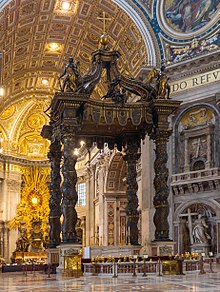
Artist: Gian Lorenzo Bernini
Year: 1623–1634
Medium: Bronze
Dimensions: 28.74 m (94.3 ft.)
Location: St. Peter’s Basilica, Vatican City
This Baldachin, or ceremonial canopy, was ordered by the Barberini family of Pope Urban VII for the location of St. Peter’s grave in the Vatican City. It is constructed of four Solomonic helical columns that spiral upward toward four imposing angels who assemble beneath a shining gold cross resting on an orb in a traditional representation of Christianity’s triumph. The dynamic energy of the columns, inspired by the ancient Temple of Solomon, symbolically links the past and present to demonstrate the church’s enduring authority. The result is a towering effect that is both dramatic and impressive. The building meditates between the basilica’s enormous grandeur and the assembled worshippers’ intimate scale, ingeniously fusing sculpture with architecture. It also frames and leaves open the view to the Chair of St. Peter, another Bernini creation.
Bernini invented the High Baroque’s emphasis on the extravagant with his embellishment of surfaces with symbolic details. Eight escutcheons are carved into the plinths or marble bases, and they display the Barberini coat of arms, which has bees, a tiara with the keys of St. Peter, a satyr’s head, and a woman’s head. The last plinth features the face of a cherub instead of the woman, who has significantly changed facial expressions, leading some academics to refer to this as the “childbirth sequence.” More olive and laurel motifs, tiny cherubs pursuing bees, and the occasional lizard appear higher up the columns, giving them both an organic vitality and symbolic meaning. The myth is that Bernini covered a real lizard while casting this image because the features are so realistically noticed and observed.
Las Meninas
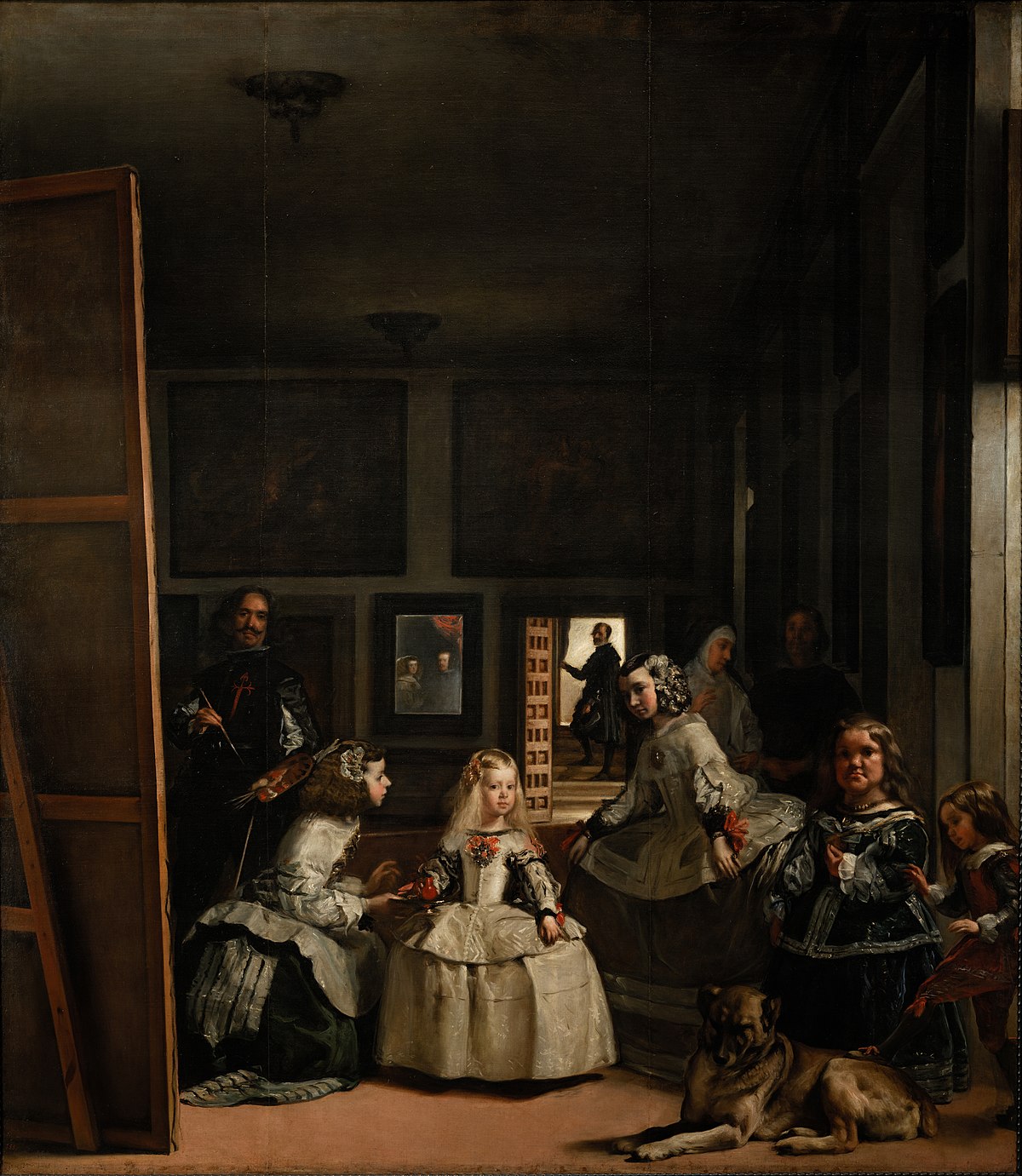
Artist: Diego Velázquez
Year: 1656
Medium: Oil on canvas
Dimensions: 3.18 m x 2.76 m
Location: Museo Nacional del Prado
The Spanish Golden Age masterpiece Las Meninas (“The Maids of Honor”) by Diego Velázquez is a cultural benchmark. This renowned oil painting on canvas was painted in 1656 and is valued by academics for its remarkable intricacy, which raises questions about illusion vs reality and the relationship between the individuals in the painting and the viewer. In contrast to other works of art from the Baroque period, this one has generated more debate due to its intellectual complexity.
The Las Meninas artwork displays a vast domestic scene with eleven people and a dog, including Diego Velázquez. Reportedly, the scenario occurs in one of the halls of the Alcázar Palace, also known as the Royal Palace of Madrid. All the individuals shown in this artwork are members of the Spanish royal family, including Infanta Margaret Theresa and her courtiers. In addition to them, there is a guard, two dwarf servants, and a large dog. In the centre of the artwork is a portrait of the artist peering straight into the viewer’s eyes.
The piece demonstrates Velazquez’s compositional prowess. Here, he used keen observation to produce captivating portraits. Still, the main emphasis of the work, which utilizes actual space, mirror space, and pictorial space, is its nearly contemporary play on perception. He strategically positioned his models to create several visual planes and diagonals that pull the viewer’s attention to various regions of the space. We are driven to observe the action in the room and consider what is beyond the visible boundaries.
The Night Watch

Artist: Rembrandt
Year: 1642
Medium: Oil on canvas
Dimensions: 3.63 m x 4.37 m
Location: Rijksmuseum, Amsterdam, Netherlands
The Night Watch is regarded as one of the most significant paintings of the Dutch Golden Age and Rembrandt’s most well-known work. The painting by Rembrandt is undoubtedly a sight; its sheer size is close to four meters tall. This artwork represents a militia company, a civic guard force, preparing to deploy to safeguard the city. Captain Frans Banning, clothed in black, and his lieutenant, Willem van Ruytenburch, dressed in the sparkling yellow of triumph, are emphasized by light and shadow.
A lone female dressed in fluorescent fabric to the left of Banning may represent the corporation. The facial expressions and movements of the group evoke a feeling of dynamic anticipation: a guy plays the drum on the right, but no one seems to be paying attention; another man clumsily attempts to load his musket; and a man wearing a helmet with oak leaves has just shot his. Rembrandt thus depicts the group’s humorous, raucous, determined, and individualistic humanity.
Rembrandt’s dramatic lighting is significant, contrasting light and shadow evident, and his skillful awareness of motion in the group picture differs from the famous military portraits of the period, which were often static. Instead of depicting the group in a formal, majestic position, he decided to represent the swarm of characters in a lively setting with the soldiers in motion.
The intensity of the painting derives from Rembrandt’s brilliant use of light and shadow, and the realistic and dynamic representation is made all the more striking by the size of the picture and its people, who seem to share the space with the spectator. When he painted The Night Watch, Rembrandt was at the pinnacle of his career. Considered one of the most well-known group portraits, this big undertaking was a triumph.
Baroque art vs Renaissance art
Stability was one of the primary tenets of the Renaissance period. Even when a situation was depicted in paintings, much of it was still. They would employ identifiable shapes to frame their work to provide the viewer with a sense of solidity. On the contrary, baroque artists used angled lines to convey drama and movement, frequently positioning their objects in opposition to one another to heighten the tension.
Even if the background was not highly detailed in Renaissance art, the painter would always create a complete one. The context was valued equally with the subject and added to the sense of stability. The spectator can determine that a figure is motionless if they are seated against a still background. The background is typically just blacked out in Baroque paintings. Whether or not the painters thought them inconsequential, they accentuated whatever the painting’s subject was. However, there are differences in these guidelines for baroque paintings, and most nations had their own recognized variant of the style.
While Renaissance art aimed to highlight calmness and rationality, Baroque artists emphasized stark contrasts, passion, and tension, often depicting the moment preceding an event instead of its occurrence. Baroque painting The most prominent Baroque painters originated from the Netherlands, Italy, and Spain. Generally, they were concerned with human subjects and depicted similar scenes.
Baroque style vs. Rococo style
The main distinction between Baroque art and Rococo art was that Baroque art represents the vast, exaggerated, energetic late-European art between 1650 and 1700. In contrast, Rococo is a late-Baroque response reflecting light playfulness and intimacy. In the Baroque period, richness and adornment were symbols of art that represented the power of Catholicism and royalty. Following the death of Louis XIV in 1715, a kinder and more laid-back era gave rise to the Rococo period. The interior design grew lighter and more decorative as a result. This was reflected first in the decorative arts before being more loosely interpreted in paintings by artists using asymmetry and humorous whimsy. Similar to Baroque art, rococo decoration is intricate, but it avoids heavy components and vivid hues. It highlights beautiful C and S-shaped curves that form asymmetrical scroll-work.
While the Baroque period and the Rococo period originated in Europe, the Baroque period was largely inspired by the Roman Catholic church, which promoted religious themes in literature and the arts as a counter to the rise of Protestantism. Before spreading to the rest of Europe, the Rococo style originated in France and was adopted by the French monarchs. The Renaissance-era style alterations were carried through into the Baroque and Rococo periods. Both included intricate detail and motion, but Baroque was heavier, more manly, and sad. Rococo was more delicate and feminine.
The Baroque and Rococo periods reflect the dominant ideologies of the eras in which they were famous. The Baroque period developed as a result of an increase in naturalism as astronomical and scientific discoveries were discovered. While maintaining some Classical aspects and highly religious themes, the art of this era grew more active and dynamic, representing motion through time and space.
What Art Movements were Influenced by Baroque art?
The Baroque style influenced the 19th-century Beaux-Arts architectural style, which was applied in several contemporary structures. French Baroque architecture blended the grandeur and drama of Italian Baroque with Greek and Roman notions of harmony to produce imposing structures that radiated power and majesty. It flourished during the reign of King Louis XIV (1643-1715), a time of cultural and economic success in France. These principles influenced Beaux-Arts architecture’s evolution, initially seen as a mainly French national style and emphasizing the significance of coordinated decorative designs.
The Baroque was the foundation of the subsequent significant art movement. If Baroque represents the Catholic Church, then Rococo represents King Louis XVII. Rococo is an art style that originated in 18th-century France. Louis XVII desired to cease drawing from foreign influences and produce something distinctively French. During this period, France had the Enlightenment, which favored reason above faith. Rococo painting departed from the dark tones of Baroque and adopted pastels instead. The style promoted pleasure, romance, courting, and French nobles’ secular, intellectual lifestyle. Art historians refer to Rococo as “Late Baroque,” yet a lighthearted and amusing courtly manner characterized it. Rubens inspired Jean-Antoine Watteau, Francois Boucher, and Jean-Honoré Fragonard, demonstrating that Baroque painters remained influential in the Rococo era.








